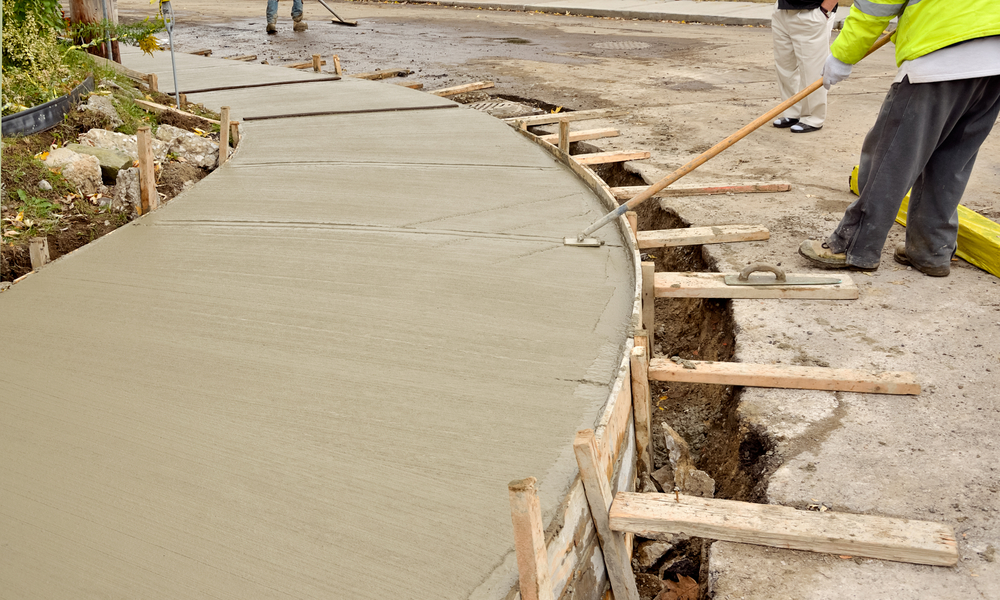Pouring and flattening a new sidewalk can be a complex or straightforward process depending on the size and location of the project.
Planning ahead for paving jobs
Proper planning makes everything easier, and for the purposes of this article, we will consider a small, home-related project. You have the option of employing a contractor, but DIY is possible also with effort on your end.
However, you’ll need to aptly prepare the area properly, and have a foundation following your specifications, including wire mesh, gravel, etc. On your own, this can takes weeks. You’ll have to plan the logistics and set aside time where you can complete time-sensitive work. Choosing the material will similarly take some research and best practices being instilled. Once this is all complete, it is time to pour!
The truck will come with the concrete premixed. Try your best to avoid rain by watching the weather channel! Or just stay on top of what the temperatures are going to be for the block of time you’ll be pouring. Also, this will need to be taken into account for the drying process as well. Ideal climate and weather conditions will lower the risk of you potentially needing anything to be repaved or damaged in the process.
When you don’t account for this, the likelihood of having early issues with cracking and swelling spikes. Cracks breaking out and swelling in the surface will damage the foundation of the material poured. Depending on how long this is left unattended, you’ll see varying level of damage.
Repaving – These are rarely necessary just after a paving, but if the job is botched it’ll have to happen again. This is usually in response to a poor DIY job. Professional paving will almost never require an early repaving.
Minor sealing – Sealing is an easier option for homeowners to execute themselves. This is simply in response to one issue arising and less so looking at the entire surface area.
How long should I expect paving to take to complete?
During regular weather a small job will take around three to five hours to pour. Have several helpers at hand to help pour and level. Put the concrete into the formwork, holding the steel mesh 2 inches above the gravel. You shouldn’t shovel the concrete, but rather push or pull it using a steel take.
After the concrete is poured into the forms, level it every few feet using a screed board.
When you have finished this process, draw a bull float over the freshly poured concrete straight after. This will force down the aggregate and raise gravel-free concrete to the top for easier finishing.
With this extra attention and proper execution, your surface will be set for years. You will occasionally have to apply minor maintenance, but that will depend more on how the surface is used.
What am I using the surface for?
Driveway- Driveways will of course have the highest volume of usage. They also will impact your day to day the most. If you expect a high volume of traffic on your driveway, be mindful of when damage visibly sprouts. Taking care of this early, as stated before, will lower your cost in the long run.
Blacktop in the backyard – Asphalt or concrete laid in the backyard will have a variety of utilities. It can be a surface for events or exercise, especially if children are in the home. Be mindful of this and if any hazards arise from damage.
If you are unsure about how to proceed with paving asphalt, or what you can do to repair your currently damaged surface, give us a call today. We’ll assess your situation and give you a customized plan to move forward best.

